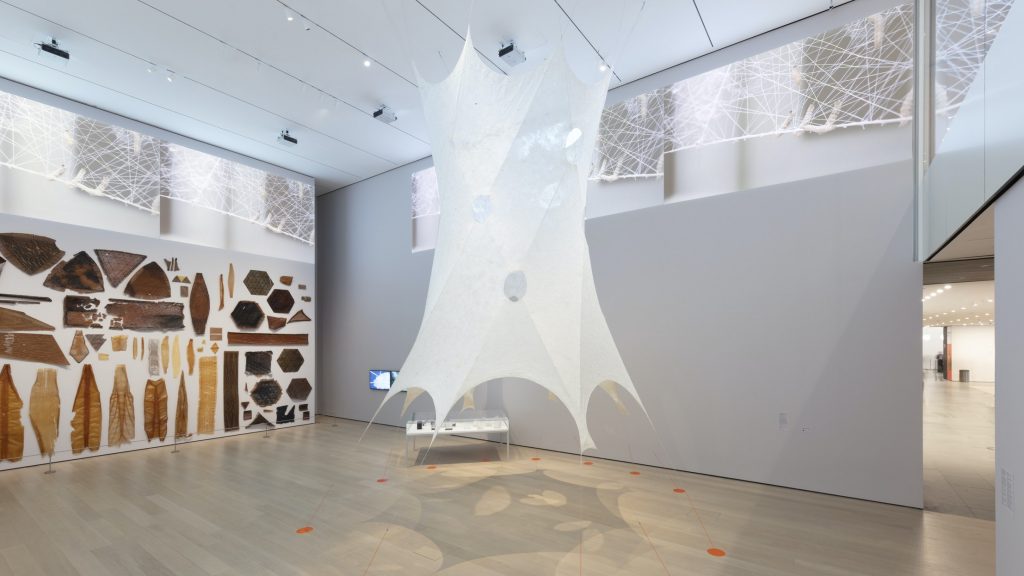
Silk Pavilion II
Neri Oxman (2020)
For this week’s Looking Outward post, I studied Silk Pavilion II (https://www.media.mit.edu/projects/silk-pavilion-ii/overview/) by Neri Oxman—a delicately woven silk structure examining the relationship between digital and biological fabrication. I was initially intrigued by the grand architectural scale and intricacies of the sculpture. The Pavilion is composed of three interconnected layers—the first layer is a web of steel-rope wires, the second layer contains fabric on which silkworms are positioned, and the third layer contains the visible Pavilion structure that is biologically spun by the 17,532 silkworms. After I studied the mechanics of the structure more, I was fascinated by the order and sequencing of the silkworms’ upward spinning motion, created by a mechanical top-down kinetic manipulation, which generates the spiral pattern. More importantly, I found the message and purpose of The Pavilion particularly interesting. In the textile industry today, silkworms are killed in their cocoon, dissolving the adhesive that connects one strand of silk to the below layers. This allows the silk strand to be extracted from the cocoon, but also harms the life cycle of the silkworm. The Silk Pavilion, however, demonstrates that artificial structures can influence silkworms to construct sheets instead of cocoons, and celebrates silkworms as designers of their own. Especially when guided by a human-made base structure and mechanism, the silkworms can weave beautifully elaborate forms and patterns.
![[OLD FALL 2020] 15-104 • Introduction to Computing for Creative Practice](wp-content/uploads/2021/09/stop-banner.png)